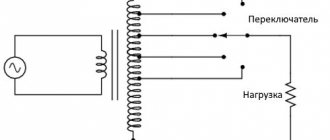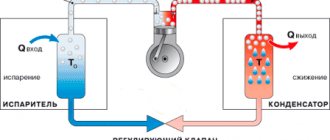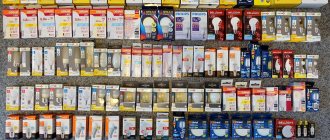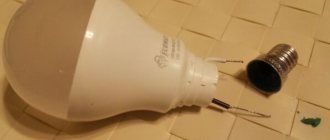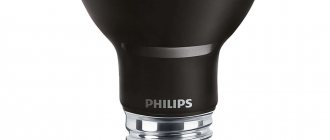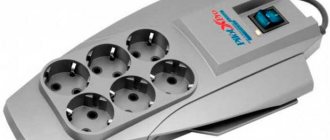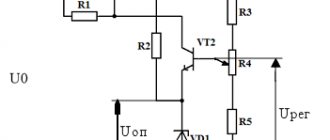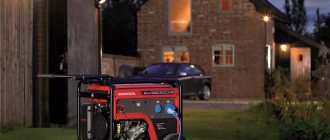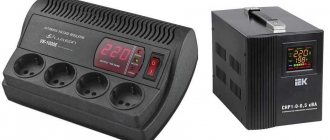A three-phase power network can be connected not only to industrial, but also commercial, social and even domestic facilities.
To equalize voltage drops and protect connected devices, appropriate stabilizers are used here.
In this review, we will consider the selection criteria and features of three-phase voltage stabilizers, analyze their technical parameters, and find out the pros and cons of popular models.
Page navigation:
What to look for when choosing?
Before purchasing a three-phase stabilizer, you should pay attention to the following key points:
- Connection options. Three-phase stabilizers are usually used to connect a similar load. In some cases, they are acceptable for powering 220 V devices connected to one phase.
- Type of equipment. Powerful three-phase stabilizers use an electromechanical or relay method to equalize the mains voltage. More accurate inverter devices with double energy conversion are less common and cost an order of magnitude more.
- Rated power. The value determines the total power consumed by the equipment connected to the stabilizer. Taking into account overloads that are typical for devices with electric motors or transformers, the stabilizer must have at least a 2-fold power reserve.
- Precision stabilization. The lower this indicator, the better. For household equipment and office equipment, an error of 5 percent is sufficient; for laboratory and television equipment, it is better to choose a stabilizer with an accuracy of no higher than 1-2 percent.
- Input voltage. This is a fairly wide range from minimum to maximum values. When the limits are exceeded, the stabilizer turns off the power to consumers or turns off itself.
- Additional options. In modern stabilizers, control and monitoring tools are often not limited to a start button and an indication light. The convenience and efficiency of the device is enhanced by digital displays, voltage regulators and even remote control via the Internet.
Three single-phase voltage stabilizers 220 V for home
This method involves connecting a separate single-phase stabilizer to stabilize the voltage for each network phase.
The advantages of this option include:
- lower cost of three single-phase devices compared to one three-phase stabilizer (not available from all manufacturers);
- increased resistance to faults in the power supply (due to the independence of the stabilizers from each other: a failure in a separate phase or a malfunction of one of the devices will not affect the functioning of the other two phases and the condition of the stabilizers installed on them);
- the possibility of individual selection of power, type and settings of the stabilizer for each phase, taking into account the nature and power of the load supplied from it;
- space saving due to the smaller dimensions of single-phase stabilizers compared to three-phase analogues.
Single-phase voltage stabilizers "Shtil" 6-10 kVA
Disadvantages of using three single-phase stabilizers:
- inability to connect three-phase consumers;
- lack of monitoring and indication capable of displaying the parameters of the three-phase power supply system as a whole;
- lack of control over the uniformity of the load on each phase (there is a high probability of phase imbalance).
Phase imbalance
– a mode of operation of a three-phase network in which one of the supply phases is subjected to a load greater than its nominal value, which can lead to overheating of its winding, triggering of protective automatics, as well as to an extreme increase in voltage on the remaining underloaded phases.
The option of using three single-phase stabilizers in a three-phase network will significantly reduce financial costs, but it is unacceptable if there is at least one three-phase electrical appliance in the house. This solution can only be used in the case of a single-phase load, evenly distributed between three incoming phases, and provided there are no tasks to monitor the general condition of the supply network.
The best models with power up to 10000 W
Three-phase low-power stabilizers are an excellent solution for organizing high-quality power supplies at industrial and domestic facilities.
Rating of the TOP 4 best stabilizers with a power of up to 10 kW according to customer reviews and ratings.
RESANTA ACH-9000/3-EM (9 kW), black
The three-phase electromechanical stabilizer RESANTA ACH-9000/3-EM in a black metal case is capable of providing voltage equalization to power equipment with a total load of 9 kW.
The device has an error of no more than 2 percent.
The unit is equipped with a network interference filtering system, microprocessor control, and a digital display that displays the main operating parameters of the device.
When the supported input voltage level is exceeded, the power supply is automatically turned off.
The equipment can be operated at an ambient humidity of 80 percent and a temperature of 0-45 degrees.
Specifications:
- stabilizer type - electromechanical;
- rated power - 9000 W;
- input voltage - 140-260 V;
- stabilization accuracy - ±2%;
- output voltage - 216-224 V;
- protection - against short circuits/overheating/overvoltage;
- cooling - natural passive;
- indication - digital display;
- connection - power terminals;
- overall dimensions - 330×770×330 mm;
- device weight - 39.1 kg.
Advantages
- high reliability;
- accuracy of work;
- no noise;
- high power.
Flaws
- floor-mounted only;
- impressive weight;
- heating during operation.
RESANTA ACH-4500/3-EM (4.5 kW), black
Supporting a total load power of 4.5 kW, the three-phase stabilizer RESANTA ACH-4500/3-EM will provide high-quality power to consumer devices and even small objects.
The device supports a wide range of input voltages, the value is 140-260 V phase.
When the minimum or maximum input voltage level is exceeded, automatic protection is triggered, turning off the output.
The device is protected from overheating by an emergency system.
The stabilizer complies with IP20 class; the ambient temperature acceptable for its normal operation is 0-45 degrees.
Specifications:
- stabilizer type - electromechanical;
- rated power - 4500 W;
- input voltage - 140-260 V;
- stabilization accuracy - ±2%;
- output voltage - 216-224 V;
- protection - against short circuits/overheating/overvoltage/interference;
- cooling - natural passive;
- indication - pointer voltmeter;
- connection - power terminals;
- overall dimensions - 490×170×330 mm;
- device weight - 21.5 kg.
Advantages
- built-in filtering of input and output frequency interference;
- Automatic power shutdown when voltage is exceeded;
- precise microprocessor control;
- compact dimensions;
- high speed of protection response.
Flaws
- heavy weight;
- high price.
RESANTA ACH-6000/3-EM (6 kW), black
The RESANTA ACH-6000/3-EM model in a black classic case will provide high-quality equalization of the input voltage and protection of connected electrical devices with a total power of up to 6 kW from accidents and power surges.
The stabilizer is three-phase, its error does not exceed 2 percent.
The device is equipped with a surge protector, a microprocessor control unit, and a digital display showing operating parameters.
Multi-level protection provides automatic shutdown when the upper and lower levels of the supported input voltage are exceeded.
The device is placed on the floor.
Specifications:
- stabilizer type - electromechanical;
- rated power - 6000 W;
- input voltage - 140-260 V;
- stabilization accuracy - ±2%;
- output voltage - 216-224 V;
- protection - against short circuits/overheating/overvoltage/interference;
- cooling - natural passive;
- indication - digital display;
- connection - power terminals;
- overall dimensions - 290×680×330 mm;
- device weight - 34 kg.
Advantages
- automatic shutdown in an emergency;
- quiet operation;
- clear controls;
- small overall dimensions;
- high speed of protection response.
Flaws
- heating under load;
- impressive weight;
- high price.
RESANTA ACH-3000/3-EM (3 kW), black
High-quality and reliable equipment RESANTA ACH-3000/3-EM in a practical black casing is capable of providing reliable protection of equipment for various purposes with a total power of 3 kW from power failures.
The device guarantees effective equalization of the 380 V network during long and short current surges.
Both three-phase and single-phase loads can be connected to it.
The stabilizer works with several powerful electrical appliances, such as a stove and a water heater.
It is possible to simultaneously connect multiple devices with low power consumption.
The unit has high efficiency, a built-in protection system, and is equipped with contact terminals for connection.
Specifications:
- stabilizer type - electromechanical;
- rated power - 3000 W;
- input voltage - 140-260 V;
- stabilization accuracy - ±2%;
- output voltage - 216-224 V;
- protection - against short circuits/overheating/overvoltage;
- cooling - natural passive;
- connection - power terminals;
- overall dimensions - 490×170×330 mm;
- device weight - 21 kg.
Advantages
- high power;
- wide input range;
- low error;
- quiet work.
Flaws
- heavy model;
- heating of components;
- low operating speed.
Three-phase voltage stabilizer 380 V for home
A three-phase stabilizer is often used to solve the problem of organizing high-quality power supply to various loads in 380 (400) V networks.
Advantages of using one three-phase stabilizer:
- possibility of powering both single-phase and three-phase loads;
- structural integrity - monoblock design;
- control of breakage, imbalance and phase rotation - a parameter that is especially important when connecting symmetrical loads, for example, three-phase electric drives;
- simplicity of switching power circuits - connection is made through one terminal block.
Three-phase voltage stabilizers "Shtil" 15 and 20 kVA
Disadvantages of using three-phase devices:
- higher cost - in most cases, purchasing three single-phase stabilizers is significantly cheaper;
- large overall dimensions and weight, limiting the choice of location and installation of stabilizers;
- instability of the three-phase stabilizer during interruptions in one of the phases. The design of modern three-phase stabilizers contains a special unit responsible for the consistency of the linear and phase voltages of the network. Therefore, if the voltage disappears on any input phase, a protective shutdown of the stabilizer will occur, which will de-energize the entire house.
The use of a three-phase stabilizer is inevitable if there is at least one three-phase load. If you don’t have one, you can get by with three single-phase stabilizers. However, when choosing this option, you should understand that if in the future there is still a need to connect a three-phase electrical appliance, single-phase stabilizers will be useless and you will have to spend money on a three-phase model.
The best models with power from 10 to 15 kW
Three-phase medium power stabilizers are designed for industrial use and protection of electrical equipment, including those with high inrush currents.
Review of the best models with power up to 15 kW.
RESANTA ACH-15000/3-EM (15 kW), black
The three-phase model RESANTA ACH-15000/3-EM with a power of 15 kW is capable of providing high-quality power supply to various devices and equipment in conditions of unstable voltage in the network.
The transformer of this device is equipped with an electric motor with a clearly defined speed.
The technology allows for an adjustment time of no more than 10 V/sec.
The output voltage error is 2 percent (4.4 V).
The device supports a wide range of input voltages, has protection against exceeding the maximum permissible value, overheating, short circuit and impulse noise.
The safety class meets the requirements of the IP20 standard.
Specifications:
- stabilizer type - electromechanical;
- rated power - 15000 W;
- input voltage - 140-260 V;
- stabilization accuracy - ±2%;
- output voltage - 216-224 V;
- protection - against short circuits/overheating/overvoltage/interference;
- cooling - natural passive;
- indication - digital display;
- connection - power terminals;
- overall dimensions - 360×840×360 mm;
- device weight - 60.2 kg.
Advantages
- high efficiency;
- relatively small dimensions;
- holds overload perfectly;
- powerful thermal protection;
- bright display.
Flaws
- high price;
- impressive weight;
- case heating during operation.
RESANTA ACH-15000/3-C (15 kW), gray
A reliable and powerful RESANTA ACH-15000/3-C 15 kW stabilizer in a practical gray case will provide power to individual devices and small objects with a total energy consumption within the stated rating.
The input voltage range of the equipment is 140–260 V per phase.
There is emergency protection against exceeding permissible input values, critical heating of the device, and short circuit.
The product meets the requirements of IP20 safety class and can be operated at a maximum ambient humidity of 80 percent, temperature range from 0 to 45 degrees.
Specifications:
- stabilizer type - relay;
- rated power - 15000 W;
- input voltage - 140-260 V;
- stabilization accuracy - ±8%;
- output voltage - 202-238 V;
- protection - against short circuits/overheating/overvoltage/interference;
- cooling - forced fan;
- indication - digital display;
- connection - power terminals;
- overall dimensions - 330×700×330 mm;
- device weight - 41.8 kg.
Advantages
- excellent price/quality ratio;
- reliability and ease of operation;
- high-quality materials and assembly;
- large, bright display.
Flaws
- uninformative user manual;
- noisy cooling system;
- heavy weight.
RUCELF SDV-3-15000 (13.5 kW), gray
The inexpensive three-phase model RUCELF SDV-3-15000 with a power of 13.5 kW is an ideal solution for neutralizing voltage surges in the network of household and industrial facilities.
The product is a high-precision stabilizing equipment.
It is equipped with a smooth adjustment system, protection against voltage surges, surges, short circuits, and critical heating of components.
The stabilizer is equipped with pointer voltmeters, power terminals for connection, and has passive fanless cooling.
The protection class complies with IP20 standard specifications.
Specifications:
- stabilizer type - electromechanical;
- rated power - 13500 W;
- input voltage - 138-260 V;
- stabilization accuracy - ±1.5%;
- output voltage - 217-223 V;
- protection - against short circuits/overheating/overvoltage;
- cooling - natural passive;
- indication - pointer voltmeter;
- connection - power terminals;
- overall dimensions - 320x780x320 mm;
- device weight - 59 kg.
Advantages
- independent phase adjustment;
- high stabilization accuracy;
- precise electronic control;
- work with high load currents.
Flaws
- impressive weight;
- lack of active cooling;
- analogue indication.
Criterias of choice
The following factors may influence the choice of a three-phase stabilizer:
- State (quality) of input voltage;
- Power of electricity consumers;
- Required leveling speed;
- Required voltage setting accuracy;
- Terms of Use.
When choosing a three-phase stabilizer, you should know in advance what minimum and maximum network voltage values may arise during operation. The permissible spread of input voltages is always indicated in the technical documentation for the product.
Three-phase stabilizers operating on medium-phase voltage are used mainly with reactive loads, so the required power is easy to calculate using the formula. Stabilizers, which are three separate blocks (one for each phase), can work with any load. In each case, power calculations must be done very carefully.
If the important criterion is the speed of stabilization, then the use of a servo-driven electrodynamic stabilizer will have to be abandoned. In this case, a relay three-phase stabilizer is suitable, and if the operation of the device involves an unheated room and operation at low temperatures, then an electronic stabilizer.
If, on the contrary, high installation accuracy is important, and stabilization speed is less important, then an electromechanical three-phase stabilizer will be the best option.
Almost all models of modern stabilizers are equipped with a bypass system. At normal network voltage, the load is connected to it directly, bypassing the stabilizer circuit. When the voltage deviates in one direction or another, the consumers begin to be powered through the stabilizer.
Structurally, a three-phase voltage stabilizer can be made in the form of a vertical floor stand, but there can also be devices with wall mounting. Some models of powerful voltage stabilizers may have a forced air cooling system, which significantly facilitates the operation of transformers and powerful semiconductor devices.
The best models with power from 20 kW
Powerful stabilizers are used in industrial enterprises and provide power to country houses with a three-phase network.
RESANTA ACH-30000/3-EM (30 kW), black
The powerful three-phase unit RESANTA ACH-30000/3-EM qualitatively stabilizes the mains voltage in the range of 140-240 V per phase to the nominal value with an error of ±2%.
The product is designed to operate with a total rated load of up to 30 kW.
Connection of consumers is carried out by connecting to the power terminals on the unit panel.
The stabilizer is equipped with a digital display for monitoring key parameters, a set of filters to suppress frequency noise at the input and output, and ventilation holes for passive cooling of components.
There is protection against overload and overheating.
Specifications:
- stabilizer type - electromechanical;
- rated power - 30000 W;
- input voltage - 140-260 V;
- stabilization accuracy - ±2%;
- output voltage - 216-224 V;
- protection - against short circuits/overheating/overvoltage;
- cooling - natural passive;
- indication - digital display;
- connection - power terminals;
- overall dimensions - 530x810x430 mm;
- device weight - 97 kg.
Advantages
- high power;
- autonomous cooling system;
- strong metal case;
- almost complete silence;
- instantaneous protection.
Flaws
- small transport wheels;
- impressive mass of the product;
- not a reasonable price tag.
RESANTA ACH-60000/3-EM (60 kW), black
The RESANTA ACH-60000/3-EM model in a stylish black case is a high-quality solution for equalizing the input mains voltage over a wide range to the nominal output values.
The unit has a low error for this class of equipment, its maximum value is 2 percent.
The device is designed to connect a rated load of 60 kW in total equivalent.
For this purpose, terminals with screw clamps are provided on the panel.
The product is equipped with a digital display, frequency filters at the input and output, and a multi-level protection system with automatic resumption of operation.
Specifications:
- stabilizer type - electromechanical;
- rated power - 60000 W;
- input voltage - 140-260 V;
- stabilization accuracy - ±2%;
- output voltage - 216-224 V;
- protection - against short circuits/overheating/overvoltage;
- cooling - natural passive;
- indication - digital display;
- connection - power terminals;
- overall dimensions - 540×1090×650 mm;
- device weight - 205 kg.
Advantages
- Ease of use;
- clear interface;
- precise voltage equalization;
- high speed.
Flaws
- not the best build quality;
- short declared service life;
- large dimensions and weight.
RESANTA ACH-20000/3-EM (20 kW), black
The powerful three-phase stabilizer RESANTA ACH-20000/3-EM in a reliable black metal case will provide high-quality power supply and long-term operation without breakdowns of various household and industrial devices.
The presented equipment is equipped with an electric motor with a clearly defined speed.
The system guarantees minimal adjustment time and high output accuracy.
The stabilizer allows you to connect consumer devices and small objects with a total power of 20 kW.
The product is supplemented with multi-level comprehensive protection.
The unit can be operated at a maximum humidity of 80 percent and an ambient temperature from 0 to 45 degrees.
Specifications:
- stabilizer type - electromechanical;
- rated power - 20000 W;
- input voltage - 140-260 V;
- stabilization accuracy - ±2%;
- output voltage - 216-224 V;
- protection - against short circuits/overheating/overvoltage;
- cooling - natural passive;
- indication - digital display;
- connection - power terminals;
- overall dimensions - 530×860×410 mm;
- device weight - 82 kg.
Advantages
- high efficiency;
- excellent performance;
- low error;
- low noise level;
- high-quality assembly;
- durable, reliable body.
Flaws
- heating during operation;
- large dimensions and weight;
- Uninformative instructions included.
Connecting a three-phase stabilizer
Connecting a three-phase voltage stabilizer is not too difficult a task, but if a person does not have basic knowledge and experience in electrical engineering, then it is better to entrust this task to specialists. The three-phase voltage stabilizer consists of three separate blocks. On the back panel of each block there is a screw block with the following designations:
- L (phase) input;
- L (phase) output;
- N (zero).
A household stabilizer is installed after the input machine and the meter. Each of the three phases is connected to the corresponding terminal of each block. The “zero” terminals of all blocks are connected to each other. The phase-output terminals are connected to the load circuit breakers. A detailed connection diagram is always available in the technical description, which should be read carefully, since each stabilizer model may have some design features.
Operating principle and scope of application
The purpose of any stabilizer is to maintain the output voltage at a given level. To understand the principle of its operation, you first need to familiarize yourself with the following features of the internal structure:
- The basis of most stabilizers is a converter-transformer with an adjustable number of turns at the output, which allows you to change the voltage on them in one direction or another;
- as long as the readings at the input correspond to the nominal value, normal 220 Volts are removed from the output winding;
- if the input voltage changes up or down, the controller built into the stabilizer processes the difference and sends a control signal to a special motor mechanism;
- the latter moves the voltage puller motor in the desired direction, adjusting the output voltage until it reaches the nominal value.
Among the samples of stabilizing devices produced by the industry, there are models with smooth and step adjustment.
The scope of application of three-phase stabilizers is quite wide. They are installed in power supply circuits not only in production, but also at home, mainly in private and country houses. Stabilizing devices for domestic needs, as a rule, have a low power rating, limited to 30-50 kW. More energy-intensive units (up to 100 kW) are often installed in city offices, suburban villages, and also in small enterprises.
For a personal dacha, a device that guarantees output power of up to 50-70 kW is quite sufficient. Industrial samples of stabilizers with a declared power of more than 100 kW are installed in factory workshops, in medical institutions, as well as at exhibition sites and shopping centers. Devices with galvanic voltage isolation operating in conditions of high humidity are in demand in specialized medical institutions, laboratories and research centers.
Deciding on the installation location
Installing a voltage stabilizer in the house with your own hands requires special attention, since if it is installed incorrectly, in the worst case, the device will fail, and in the worst, a fire will occur. Recommendations for self-installation are as follows:
- It is necessary to choose a dry and well-ventilated room, since the most common cause of equipment failure is the formation of condensation in its housing;
- If the product is installed in a niche, then the finishing materials surrounding it must be fireproof (metal, glass, brick, etc.);
- A gap of at least 10 cm should be maintained between the equipment itself and the walls;
- If installing against a wall, the stand or anchors must be strong enough to support the weight of the stabilizer.
Connecting a voltage stabilizer to an electrical outlet is a simple procedure, but it does require a person to have some knowledge of electrical work. In order to connect correctly and safely, you should adhere to several simple but mandatory rules, which will be discussed below.
- First of all, the installation location is selected. Modern stabilizers are wall-mounted (the mounting location is selected) and floor-mounted. The unit is installed after the electricity meter. It is worth noting that you should not expect an additional increase in energy costs, since the equipment itself consumes an average of 20–30 W. It is not recommended to install a stabilizer in front of the meter - this is prohibited and may cause problems with energy supervision;
- Most stabilizers, especially floor-standing models, are equipped with a terminal block or terminal block. The connector consists of four terminals through which wires are connected: two input (phase and ground) - come from the distribution panel and two output (also phase and ground) - the load is connected to them;
- It is not difficult to connect a voltage stabilizer with your own hands, but before starting work, you should make sure that there is no visual mechanical damage on the unit, its assembly is reliable, and the wires are connected well. Next, the line is de-energized, the voltage at the meter is turned off, the rated characteristics of the machine located at the input are checked (the indicator should be higher than the power of the stabilizer itself);
- All electricity consumers are turned off, and the stabilizer itself is connected. Here the phase is inserted into a special connector for the terminal;
- The same work is done as in the previous paragraph, only instead of the phase from the meter, the neutral wire is connected to the connector in the device.
Stabilizers from
Three-phase voltage stabilizer 15 kW "Energy HYBRID SNVT 15 000/3" is an original technical solution that combines two principles of voltage stabilization in one device - electrodynamic (servo-drive) and relay. The device provides stable operation in the network voltage range from 105 to 280V and guarantees a voltage setting of 220±3%.
The stabilizer can be used in the country, in country houses, offices and small industrial enterprises. The device is made in the form of a vertical stand and is equipped with all types of protection.
When choosing three-phase stabilizers, you should pay attention mainly to Russian developments, since, unlike foreign manufacturers, they are fully adapted for operation in our conditions.
With this they read:
Industrial voltage stabilizer: what criteria should you use to choose?
Choosing an electronic voltage stabilizer: operating principle and characteristics
Voltage stabilizer for a gas boiler: types, selection criteria and power calculation
Choosing a relay voltage stabilizer: design, advantages and disadvantages
Did you like the article? Share with friends on social networks!
